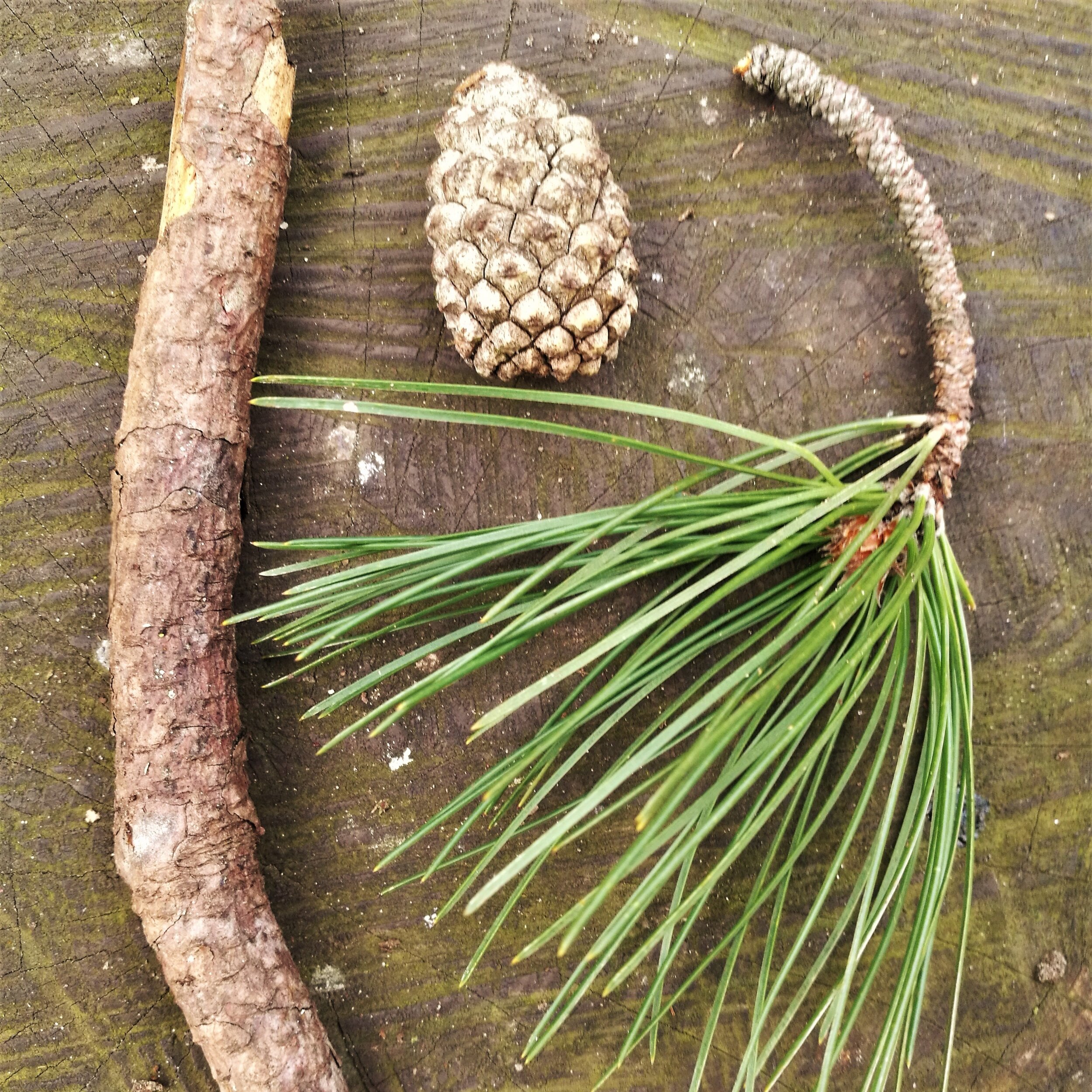Scots Pine (Pinus sylvestris)
At home in Ontario, Scots Pine are not very impressive. The growing conditions aren’t ideal for it, and so they tend to be stunted, if fragrant and beautifully formed, like bonsai versions of the ‘real thing’. The playground of my primary school was dotted with sixty-year-old specimens, with branches you could climb (even if the rules said not to), shade you could rest in, and drifts of lethally sharp needles and cones that made for all sorts of make-believe possibilities (it was a simpler time). The Scots Pines of Europe, and of the UK, are long-living giants which grow up to 35m tall. The UK has only three native conifers, of which the Scots Pine is one. They are found throughout the isles, but prefer poorer, rockier soil. These will grow well where other trees will not, making it a favourite for forestry plantation.
What it looks like
Scots Pine are tall and generally free of branches lower down the trunk when mature, with horizontal, massive limbs further up, in a general ‘lollipop’ formation. The bark of mature trees looks like massive, patchy scales with deep fissures between (I think they look a bit like dinosaur legs), and the bark is silvery grey and brown towards the bottom and reddish brown towards the top. Needles are bluish green, roughly 10cm long and grown tightly in pairs, which twist together a little. Needles are tough and sharp. Male and female flowers grow on the same branches, with pollen-bearing yellowish male flowers growing at the bases of shoots and female, reddish flowers growing at the tips. Cones grow in small clusters, and take two years to mature, meaning that trees typically have cones at different stages at the same time. These can be anywhere from 4-10cm in length, with a rounded egg shape. |They start green and conical, but mature to golden or grey-brown. Ends of scales are round, blunt and very woody.
Uses
Pines are infinitely useful. Pine needle tea, made with fresh young needles in their first year of growth, is high in vitamin C, though you will need to simmer the tea, covered, and ensure you have a high needle-to-water ratio if you are to get a good flavour out of it. Pine boughs make for decent insulation, being thickly-needled. The wood burns quick and hot, and the knots of branches are typically rich in resin. It does tend to flare and spark, however, making this a lively firewood choice. Pine tar or pitch is a bushcraft staple, as an adhesive, sealant, and also as an ingredient in skin ointment. Pine pitch is an ingredient in my favourite natural insect repellent. Fresh, sticky and highly-fragrant sap can be gathered from wounds in the tree where they have occurred naturally, or where a gash has been purposefully cut. It is then rendered carefully over a low fire (or using a double boiler set up to help avoid setting the pitch alight), strained, and then mixed with beeswax and other materials, potentially, depending on what purpose you intend to use it for.

